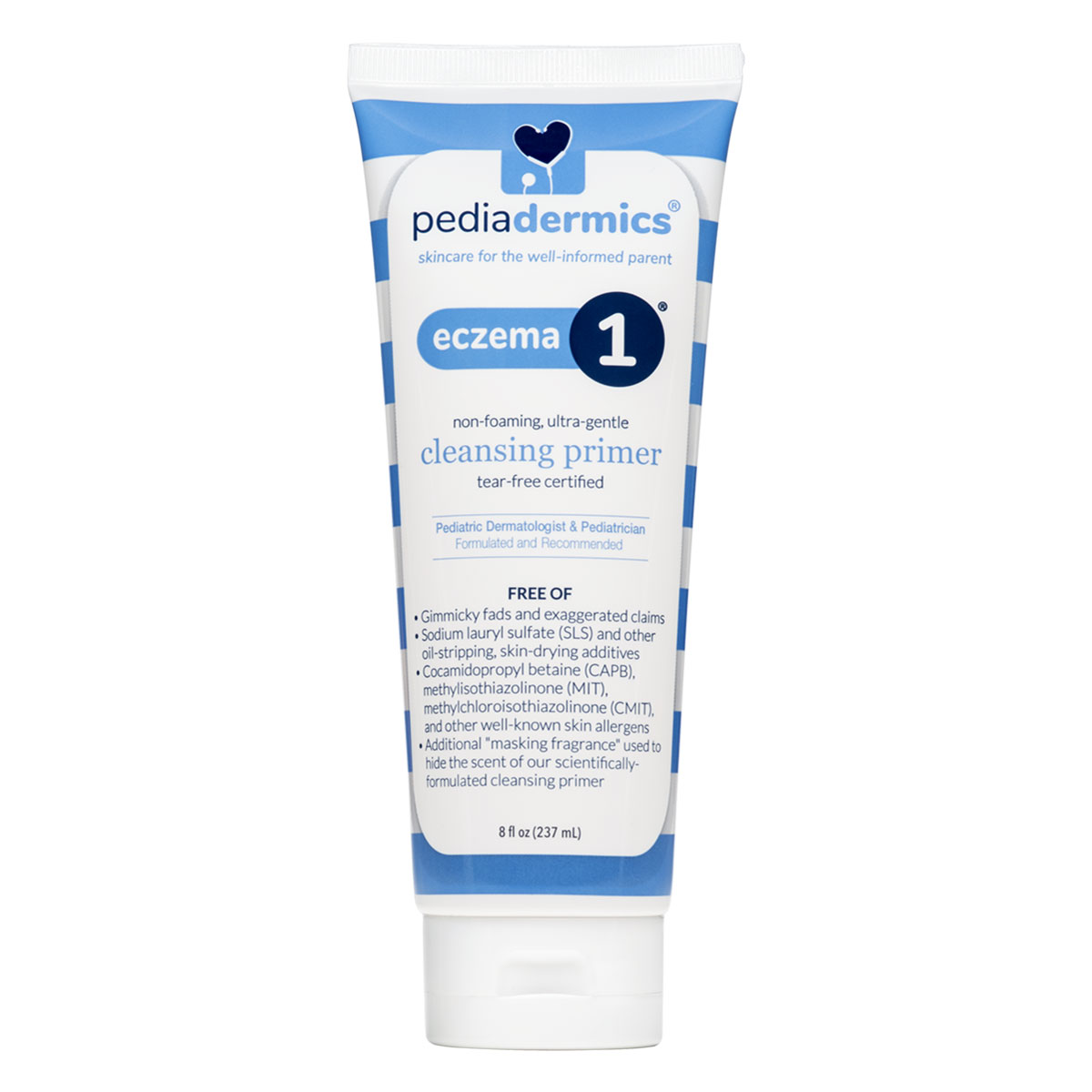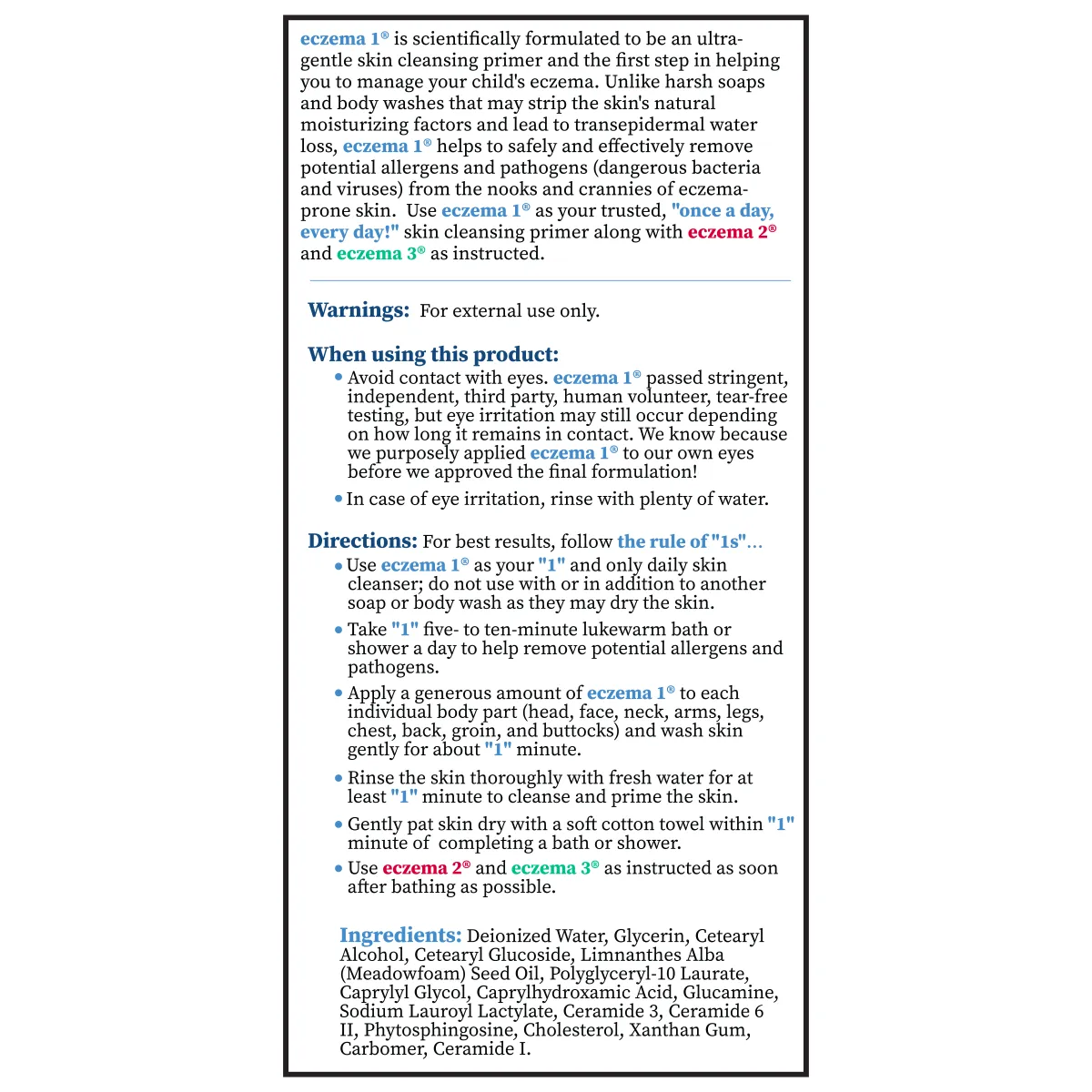Purified Water
Water makes up more than 60% of the content of human skin. Under normal conditions, the stratum corneum (the outermost layer of our skin’s epidermis) acquires most of its moisture from the fluids that bathe the underlying layers of the skin. Sweat glands also contribute a small amount of moisture. The stratum corneum works hard trying to maintain its water content; however, it, ultimately, loses moisture through evaporation, which is strongly influenced by environmental factors such as temperature, relative humidity, and air flow.
When it comes to moisturizing the stratum corneum, hydrating (i.e. adding water) is more important than adding oil. Don’t believe us? Try this simple experiment: Take two cuttings of skin from a callus from the heel or ball of your foot; place them both on a dish and allow them both to desiccate (dry out) over a few days, remaining exposed to the air. Next, soak one of the skin samples in olive oil, and soak the other in water. Even after just a few hours, the difference should be obvious with the water-soaked skin sample becoming increasingly softer and more pliable.
Why is it in our science-based pediatric formulation?
The main ingredient of Eczema1 is purified water. There is no better compound for gently cleaning your skin at the same time as hydrating it.
Glycerin
Also referred to as glycerol or glycerine, glycerin is a naturally occurring organic compound and component of many lipids, including glycerides. It is sweet-tasting and is odorless and colorless. With its three hydroxyl groups, glycerin is highly hygroscopic, meaning it has a special ability to attract and hold water molecules. It is also purported to be mildly antimicrobial. Consequently, glycerin serves as an ideal, non-toxic humectant, and is even approved by the
U.S. Food and Drug Administration as a food additive.
Glycerin may be of animal or vegetable (usually soybeans) origin. Importantly, we only use vegetable-based glycerin in our products.
Why is it in our science-based pediatric formulation?
Because of its unique chemical properties, Eczema1 utilizes glycerine to help gently prime and cleanse the skin, while pulling water into the stratum corneum to help keep it moisturized.
Cetearyl Alcohol
Cetearyl alcohol is a so-called “fatty alcohol” consisting of cetyl and stearyl alcohol in combination. Chemically speaking, it is composed of a long oil-soluble portion. Its chemical properties allow it to function as a non-drying, non-irritating stabilizer for “oil and water” mixes, which would otherwise want to separate. It also adds some viscosity (thickness) to the formulation, imparting an emollient feel on the skin. Cetearly alcohol is considered to be very safe and the
U.S. Food and Drug Administration as a food additive.
Why is it in our science-based pediatric formulation?
Cetearyl alcohol is a “multi-tasker” in our Eczema1 formulation, functioning as an emulsion stabilizer that keeps our formulation from separating. Its added viscosity helps to thicken the Eczema1 formulation, making it easier to spread over large skin surfaces.
Cetearyl Glucoside
Cetearyl glucoside is formed by the condensation of cetearyl alcohol with glucose. It may be derived naturally or chemically synthesized. Its main function is as a sugar-based emulsifier, helping to stabilize for “oil and water” mixes, which would otherwise want to separate.
Why is it in our science-based pediatric formulation?
Cetearyl glucoside is a “multi-tasker” in our Eczema1 formulation, functioning primarily as an emulsifier. It also adds some viscosity (thickness) to the Eczema1 formulation, enhancing the feeling and making it easier to spread over large skin surfaces.
Meadowfoam Seed Oil
Meadowfoam (Limnanthes alba) seed oil comes from a tiny white flowering plant that flourishes in marshy regions of Northern California, Oregon, and Vancouver. When it blooms, it is said to resemble sea foam – hence its name. Meadowfoam seed oil is a special plant oil because its chemical composition (it contains over 98% long chain fatty acids, the building blocks of fats and oils) makes it extremely stable. It also contains vitamin E, which functions as a natural antioxidant.
Why is it in our science-based pediatric formulation?
Meadowfoam seed oil functions in the Eczema1 formulation as a non-greasy, ultra-moisturizing oil that effectively penetrates the stratum corneum and helps restore skin barrier function. It also helps stabilize the other ingredients in the formulation.
Polyglyceryl-10-Laurate
Polyglyceryl-10-laurate consists of a polyglycerol ester formed by an average of 10 glycerol units in lauric acid - hence its name. It is a powerful solubilizer and is used as an effective emulsifier, especially in emulsions with low viscosity. It is eye-friendly and PEG and PPG free.
Why is it in our science-based pediatric formulation?
Polyglyceryl-10-Laurate is utilized in our Eczema1 formulation as a state of the art viscosity modifier, co-emulsifier, and gentle detergent. Its hydrophilic structure also lends excellent water binding capacity, helping to leave pleasant texture on the skin.
Caprylyl Glycol
Also known as 1,2-octanediol, caprylyl glycol is an alcohol derived from caprylic acid, an 8-carbon saturated fatty acid. It is a colorless liquid with a slightly sweet scent. It is used as an outstanding humectant, pulling water into the skin to help hold moisture where it is needed. It is purported to have antimicrobial properties, which explains why it is also utilized as a preservative to help stabilize skincare formulations.
Why is it in our science-based pediatric formulation?
Eczema1 utilizes caprylyl glycol mainly as a humectant, pulling water into the stratum corneum to help hydrate the epidermis and restore barrier function. We also take advantage of its antimicrobial properties, utilizing it as a preservative that prevents contamination of our formulation after the bottle has been opened to the air.
Caprylhydroxamic Acid
Also referred to as Octanohydroxamic acid or caprylohydroxamic acid, caprylhydroxamic acid is an amino acid that is primarily utilized as a preservative. Somewhat uniquely, it functions very well at neutral pH levels, which makes it ideal for “sensitive skin” formulations. It also acts as a chelating agent of iron ions, which is critical since low iron environments correlate to lower levels of mold growth.
Why is it in our science-based pediatric formulation?
In specific combination with other Eczema1 ingredients, caprylhydroxamic acid functions as a gentle preservative, allowing us to avoid having to include traditional preservatives such as parabens, isothiazolinones, and formaldehyde donors.
Carbomer
Carbomer is the more common name for polyacrylic acid (PAA). This ingredient is actually a group of high molecular weight (i.e., large molecule) polymers of acrylic acid. Carbomer’s main utility is due to its ability to “swell” in the presence of water at neutral pH. This is due to the loss of protons from many of the molecule’s side chains. The overall effect is that carbomer acquires a negative electrical charge, allowing it to attract and retain water and “plumping” it in size.
Why is it in our science-based pediatric formulation?
Carbomer is utilized in our Eczema1 formulation as a texture enhancer, helping to give it a feel that is a bit more like a gel than a runny, watery solution. Additionally, carbomer has some utility as an emulsifier, helping to keep our formulation from separating into its “oil” and “water” components.
Glucamine
Glucamine, also known as aminodeoxyglucitol, functions as a classical neutralizer. It is very safe, and it does not release any secondary reaction toxic element, such as nitrosamine.
Why is it in our science-based pediatric formulation?
Glucamine functions simply as a classical neutralizer, helping to balance the pH of our formulation to the specific needs of sensitive skin.
Sodium Lauroyl Lactylate
Sodium lauroyl lactylate helps improve the texture and feel of the overall Eczema1 formulation. Additionally, its sodium backbone allows it to penetrate the stratum corneum and form a protective barrier that minimizes transepidermal water loss.
Ceramide AP
Also known as ceramide 6 and alpha-hydroxy-N-stearoylphtosphingosine, ceramide AP is a member of a group of molecules called ceramides, which are a major lipid component in the stratum corneum of human skin.
Why is it in our science-based pediatric formulation?
Research has demonstrated that patients with eczema tend to have a deficiency of ceramides in their skin. Our Eczema1 formulation adds this missing ceramide back so that barrier function can be better restored.
Phytosphingosine
Phytosphingosine is a lipid occurring naturally in the stratum corneum, both in its free form as well as part of the major fraction of ceramides. Chemically, it is classified as a sphingoid base, a fundamental building block of more complex sphingolipids.
Why is it in our science-based pediatric formulation?
We utilize phytosphingosine in Eczema1 for its ability to help prevent disruption of the skin barrier. We also take advantage of the fact that phytosphingosine provides a skin moisturizing effect, helping to modulate filaggrin metabolic pathways that, in total, help maintain skin barrier function.
Cholesterol
Cholesterol is a sterol, which is a type of lipid molecule essential for maintaining cell membrane structural integrity and fluidity. It is utilized mainly for its ability to repair the skin’s natural barrier function.
Why is it in our science-based pediatric formulation?
We rely on cholesterol in our Eczema1 formulation mainly to help restore barrier function and as an emulsifier, helping to keep “oil” and “water” components from separating.
Xanthan Gum
Xanthan gum is a polysaccharide derived from the bacteria, Xanthomonas campestris. It is used to bind and thicken formulations and forms a gel when added to water. It also functions as an emulsifier.
Why is it in our science-based pediatric formulation?
Xanthan gum helps improve the texture and feel of our Eczema1 formulation. We also utilize it as an emulsifier, helping to keep “oil” and “water” components from separating.
Ceramide EOP
Also known as ceramide 1, ceramide EOP is a member of a group of molecules called ceramides, which are a major lipid component in the stratum corneum of human skin. “EOP” refers to the specific structure of this ceramide: “E” indicates that there is an ester linked fatty acid; “O” indicates that omega hydroxy fatty acid is the amide-linked fatty acid; and “P” refers to the phytosphingosine base.
Why is it in our science-based pediatric formulation?
Research has demonstrated that patients with eczema tend to have a deficiency of ceramides in their skin. Our Eczema1 formulation strategically combines Ceramide EOP with Ceramide NP to
work synergistically to improve overall skin barrier function.





